Jump to:
Trees add year-round interest to gardens while providing shade and privacy. They’re also great habitats for wildlife. But some take decades to mature, which can test every gardener’s patience.
Flowers may bloom at the first sight of sunlight, but certain trees take time to grow at their own pace. If you don’t want to wait around and want to enjoy your tree as soon as possible, this is where fast-growing trees come in.
Fast-growing evergreen trees are great options if you want to see results faster. But choosing a variety isn’t as simple as choosing garden plants. You should consider various factors, including whether the tree suits the British climate.
Luckily for you, our team has compiled a list of the UK’s fastest-growing trees.
UK’s Fastest Growing Trees
Weeping Willow and Silver Birch have been listed as one of the UK’s fast-growing trees. Having an idea about these and other varieties will also help you avoid those trees that can cause havoc on your shed.
Trees have lots of important roles to play in the garden. And those that grow quickly can bring interest to your garden in years (rather than decades).
On top of the added interest and shade, trees also provide natural garden privacy. And if you want to encourage more wildlife in your outdoor space, trees can offer them an ideal habitat.
1. Weeping Willow
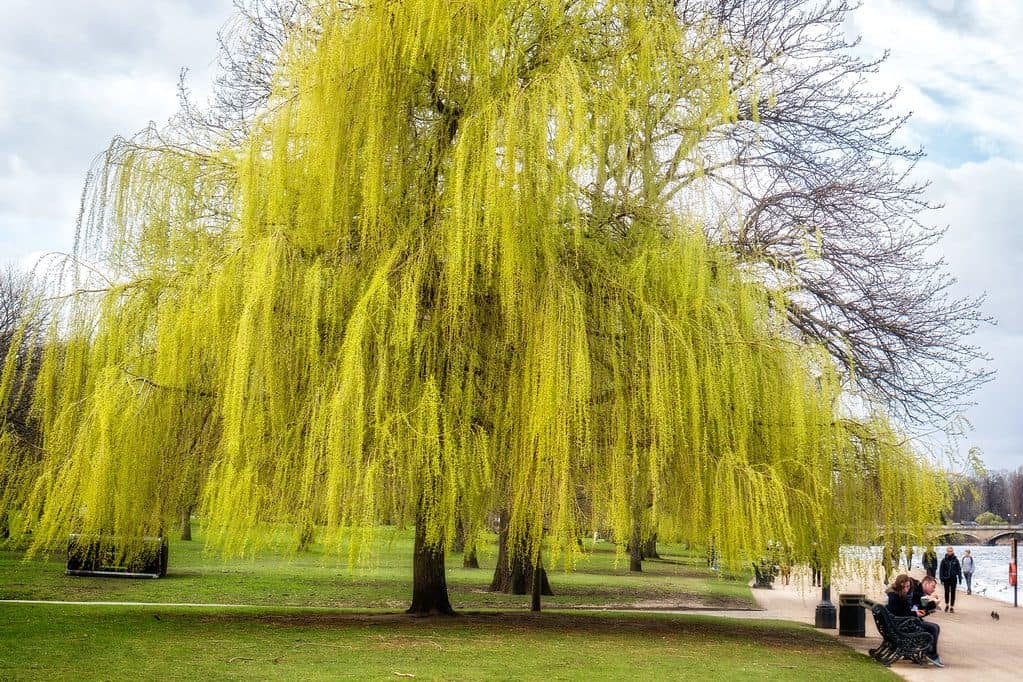
The Weeping Willow (Salix babylonica) is famous for its unique lush, curved appearance. It is often found on the banks of lakes and rivers.
The low branches form beautiful canopies, creating lots of shade. This beautiful tree grows between 1.2 metres and 2.4 metres per year and will reach around 15 metres high.
The Weeping Willow has that mysterious yet magical vibe. It could be the perfect tree for your cottage garden, adding a touch of charm to the space.
You’ll need to be aware of a few things, though. For one, Willows like standing water and they tend to grow near ponds, streams and lakes. Their roots are aggressive and will tunnel far away from the tree itself.
Thus, it’s important to not plant a Willow closer than 50 feet away from water, gas lines, and wire cables. Moreover, they are susceptible to powdery mildew, bacterial blight, and tar spot fungus.
But with the right care, a Weeping Willow can make a perfect addition to your garden. It will take about three years for a youthful tree to become well-situated.
2. Lombardy Poplar
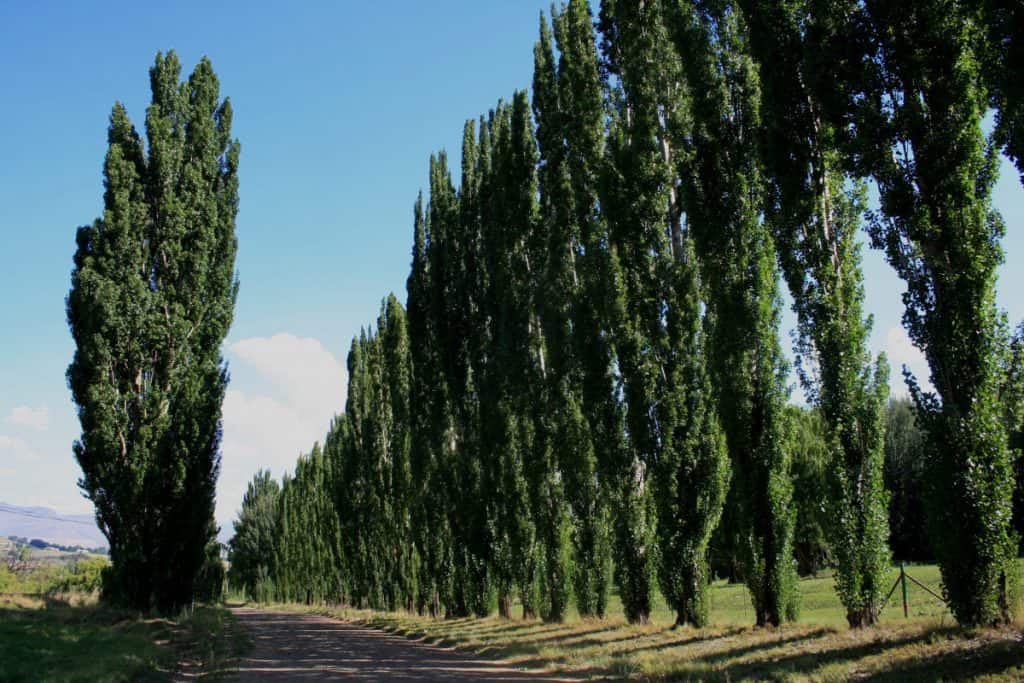
The Lombardy Poplar (Populus nigra ‘Italica’) grows dramatically upright, dominating the landscape. It has an extremely quick growth rate of 3.6 metres a year and reaches around 20 metres (66 feet tall).
It is capable of growing up to 6 feet in a year and grows best in well-drained soil, clay soils or sandy soil with a pH level of 4.5 to 8.5. You’ll often find this towering tree planted in tight rows to form a screen.
Featuring a columnar shape, its diamond-shaped leaves change from bright green to blazing golden yellow, then they fall. You should be aware that it also has naturally weak branches and they can be triggered in strong winds.
Lombardy Poplar grows rapidly tall yet it has a very short lifespan of around fifteen years.
3. Dawn Redwood
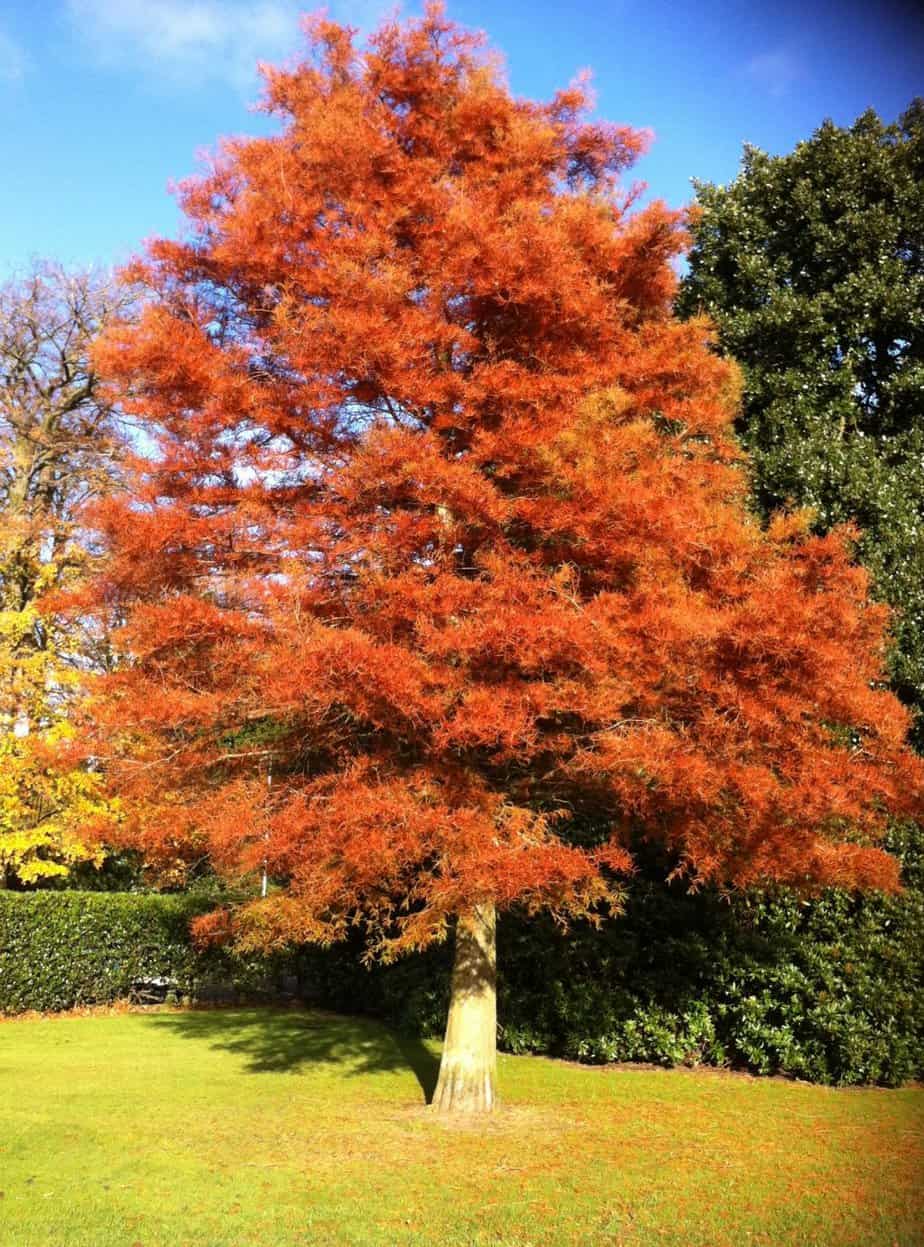
Dawn Redwood (Metasequoia glyptostroboides) grow at an extremely fast rate, often exceeding growth of two feet per year. This tree, which originates from China, can grow up to 30 metres (90 feet tall) and seven metres wide.
It grows well in most soils and weather conditions and can often be found in parks and large open spaces. One Dawn Redwood tree is known to have grown to a height of 120 feet tall in just 30 years.
As for the appearance, it is a deciduous conifer that produces small, round 1/2″ to 1″ cones. It has a neat pyramidal shape in youth, maturing into a more rounded crown. The bright green, feathery leaves turn orange-brown or reddish-brown in the fall.
4. Eucalyptus

Eucalyptus are among the fastest-growing tree species. Even a 30 cm root sapling of this tree species planted in spring could reach head height by the following summer.
You’ve likely smelled its leaves in flower arrangements or in potpourri before. The dusty blue-green leaves are refreshingly aromatic. You’ll surely enjoy walking around your backyard just to smell and look at it.
You can start your own seed and have the tree tall enough to give you lots of shade. It can also sit under in five years or so.
This evergreen tree gives your garden a year-round burst of colour and grows up to 2.4 metres a year. When left untrimmed, a Eucalyptus tree can grow to 20 metres (66 feet tall).
5. Silver Birch
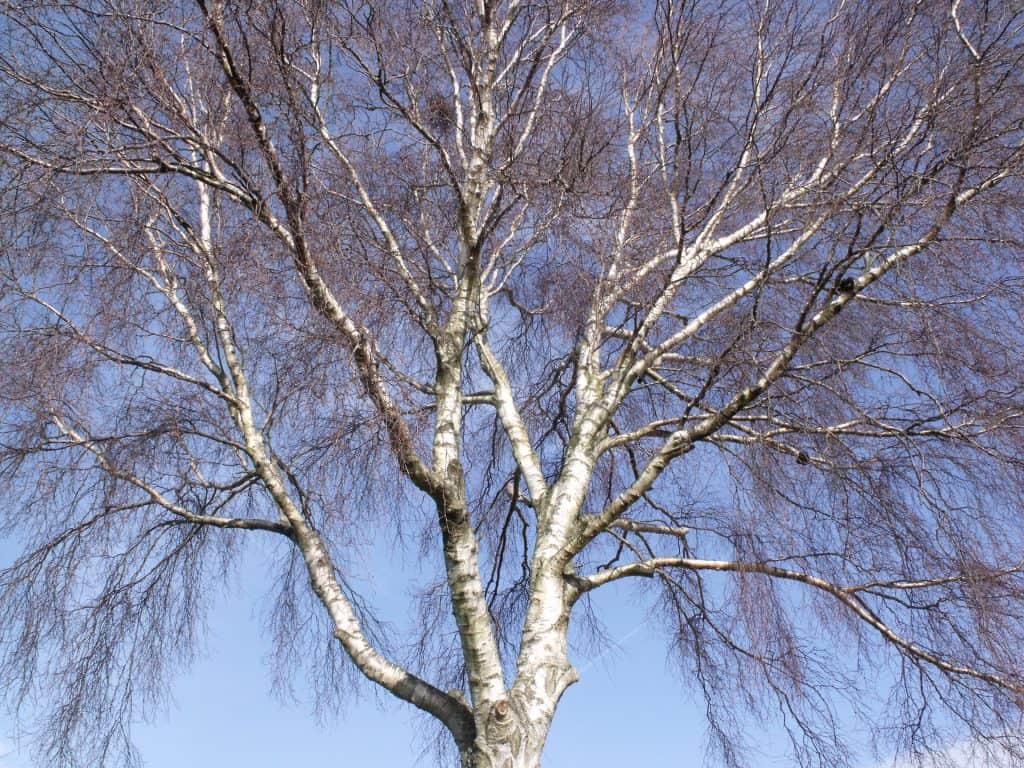
Native to the UK, this hardy tree is easy to spot by its white peeling bark, triangular leaves and catkins. Also known as Betula pendula, it reaches a height of 30 metres and grows around 40 cm per year.
Like the Weeping Willow, Birch trees have wide-spreading roots. This tree can be used to enrich the soil around it and help encourage the growth of other plants in your garden.
Further, Silver Birch is a versatile tree. It can tolerate a wide range of temperatures and weather conditions. You can find this tree species in places as disparate as Spain and Lapland.
Birch trees are also a great addition to British wildlife gardens. For one, Woodpeckers love the trunk, while small birds eat the seeds it produces. One threat to be aware of is the Birch dieback. It’s a disease caused by fungal pathogens.
6. River Birch
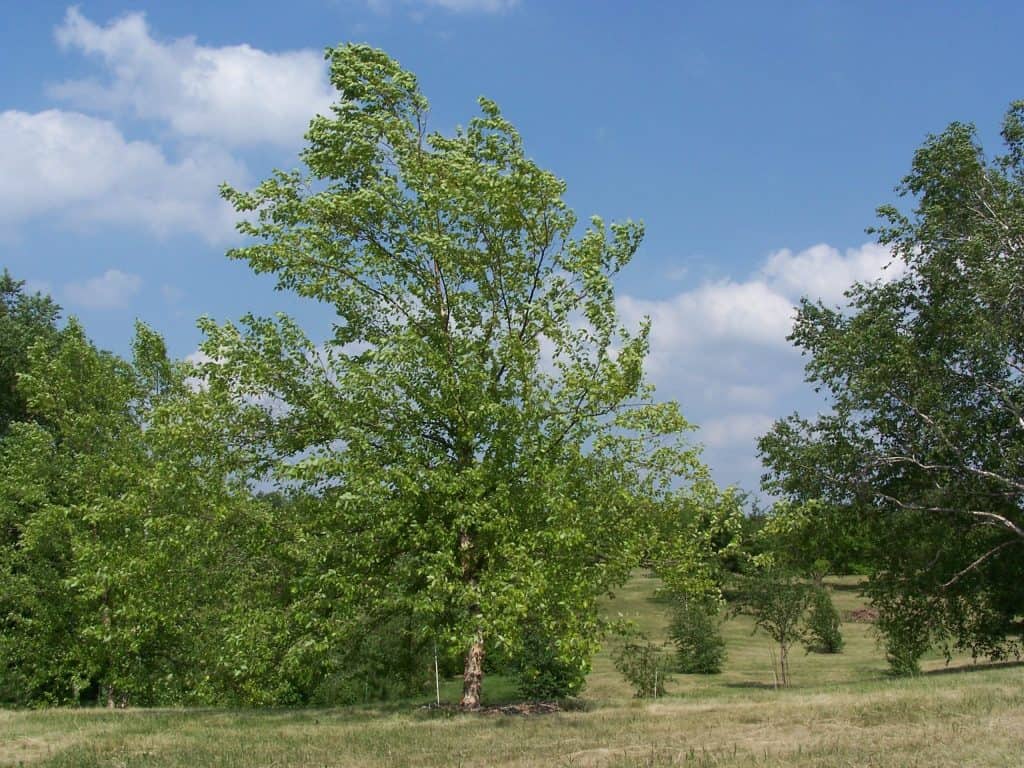
A durable tree that can grow almost anywhere and grows by up to a metre every year. Dwarf varieties may grow a bit slower, which could take up to 10 years or so to reach 10 feet.
Plus, it requires a lot of water to grow effectively – up to 90 litres a week as root saplings. But the result is promising as it grows up to a metre a year, reaching 27 metres.
River birches are not particularly long-lived trees as well. As for the appearance, it has smooth fuzzy twigs and unique buds among Betula trees.
It’s a type of clumping birch tree with reddish-brown bark, glossy green diamond-shaped leaves, and a pyramidal crown.
7. Italian Cypress
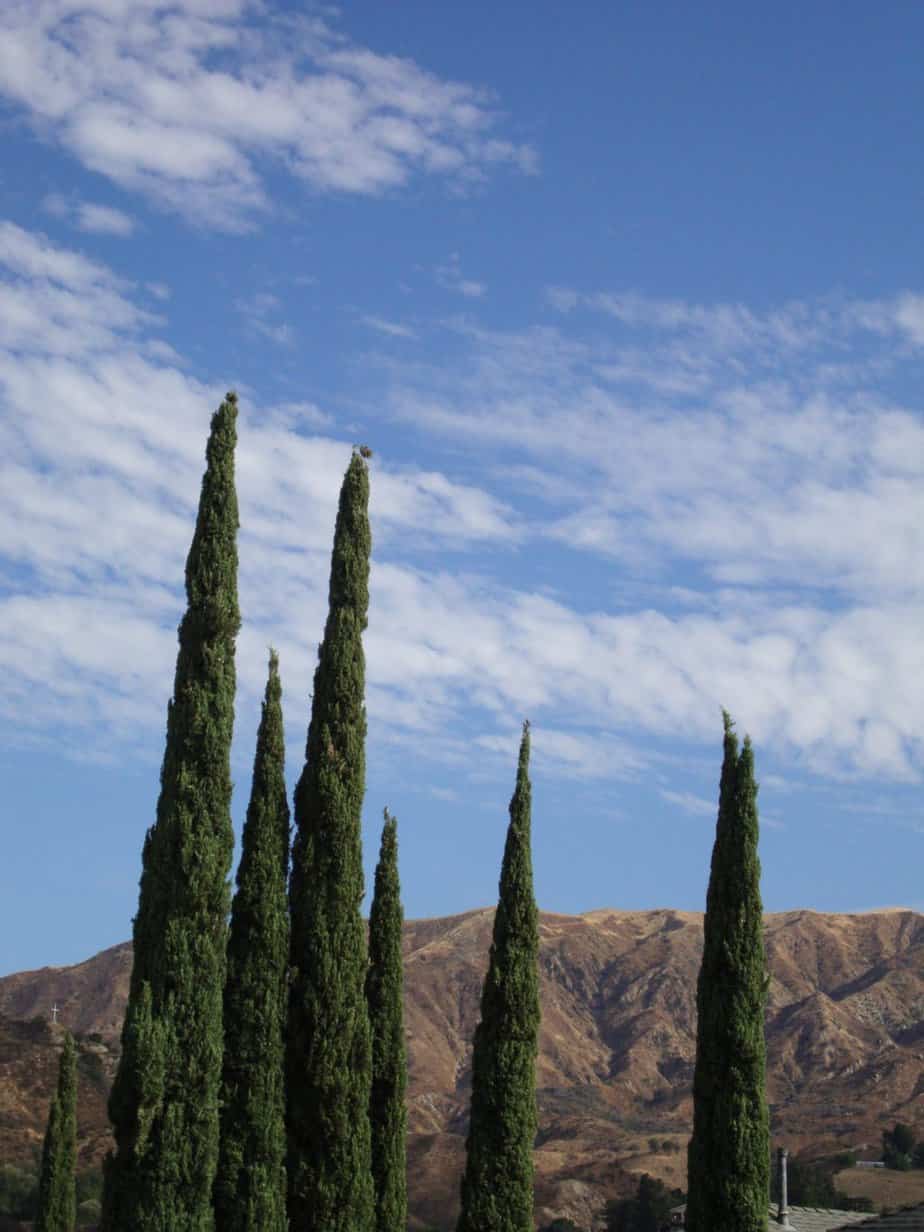
This evergreen tree grows up to 3 feet per year, offering privacy and property dividers. Italian Cypress looks like a column, can reach 12 metres (39 feet tall), and is drought tolerant.
You can control the height by pruning the top. They require little water, adapt to most soil types, and are heat tolerant.
Also known as Cupressus sempervirens, you can identify one by examining the foliage of a Cypress tree. It resembles scales and has an intricate pattern of overlapping pairs on the stem.
If you want a slender, elegant addition to your landscape, this tree is your best bet!
8. Red maple
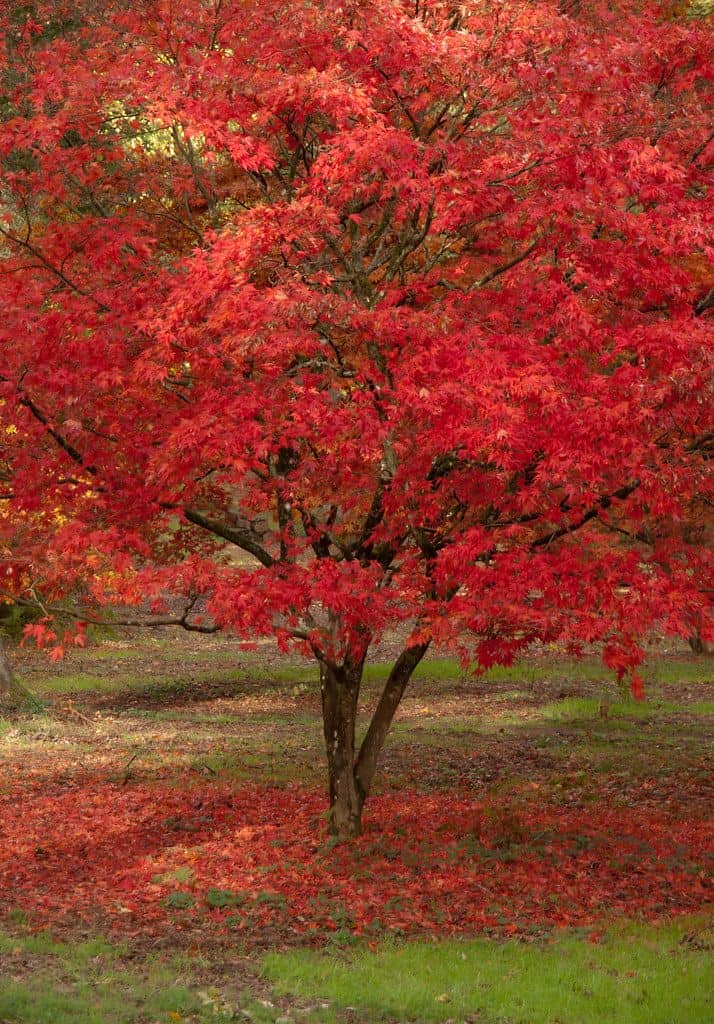
If you want to speed up the process of your garden, opt for Red maple (Aces ribrum). Red maple is praised for its brilliant autumn colouration and ability to adapt to a wide range of habitats.
Native to North America, it grows up to an impressive 24 inches in height each year. The largest ones can grow more than 36.5 metres (120 feet tall).
There are also lots of maples to choose from and they all grow quickly, apart from the Japanese maples or Acers. These grow to 24 metres (79 feet tall), around 60 cm a year.
9. Tulip Poplar
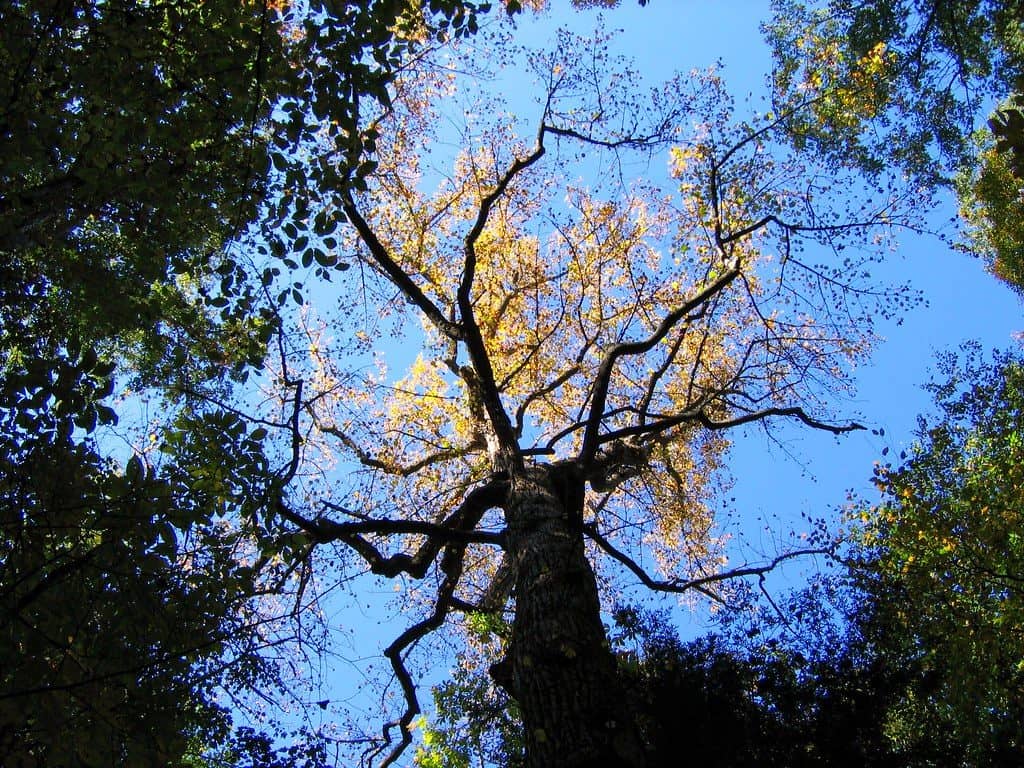
Tulip Poplar is a leafy tree that has a fast to medium rate of growth. It can grow rapidly when it’s young, but its growth slows to a medium rate as its gets older.
A fast growth rate means more than 25 metres (82 feet tall) a year. A medium growth rate means 13 to 24 metres a year.
It’s a perfect tree for gardens as it provides enough shade due to its wide leaves. Moreover, it has cup-shaped fragrant golden-yellow and green flowers.
Six rounded petals form the flower’s shape, and it looks remarkably like a tulip flower. This tree would look amazing to your garden aesthetic!
10. Golden False Acacia
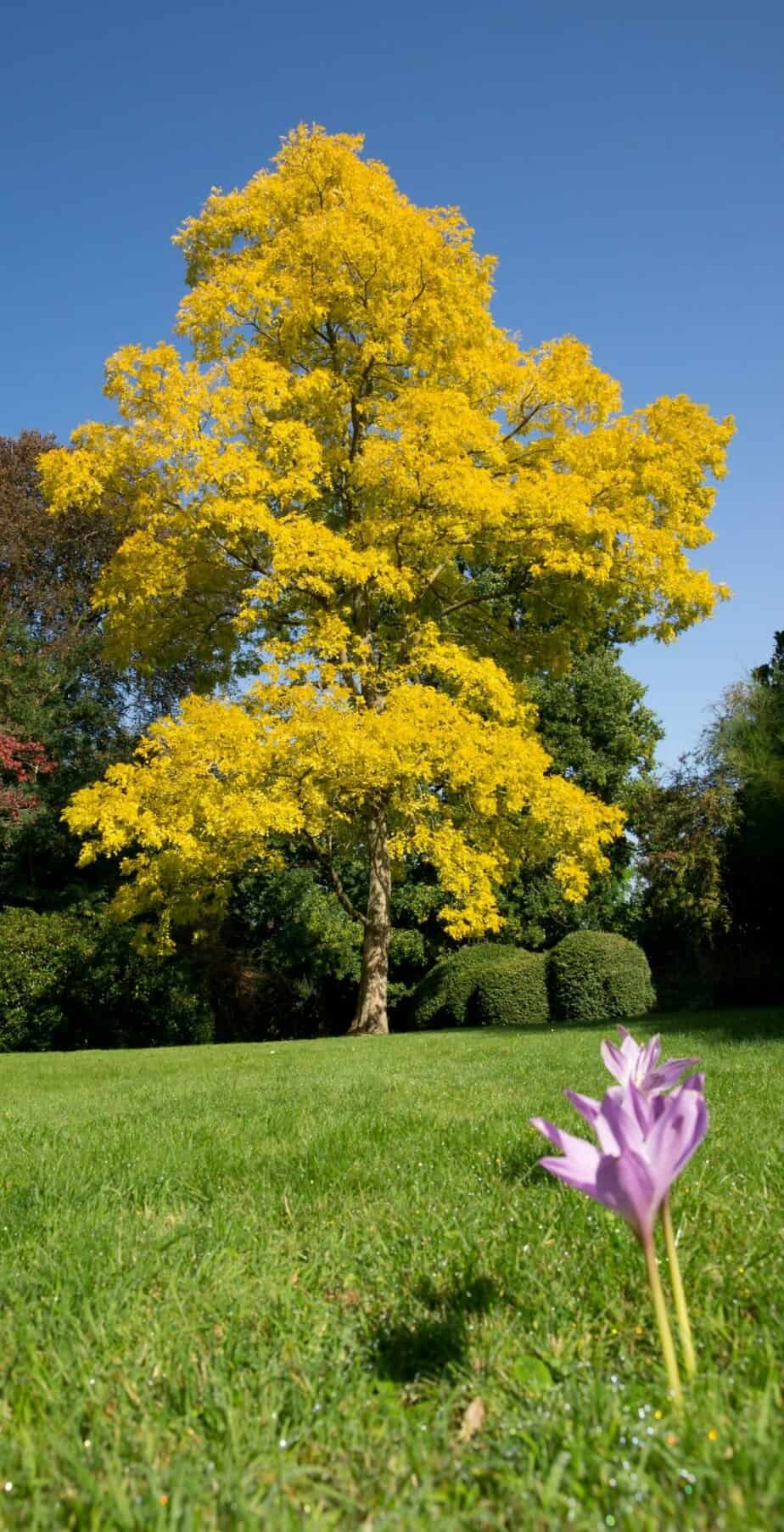
A popular fast-growing tree that can complement gardens with its beautiful summer foliage. False Acacia achieves all year round with its pinnate leaves and gorgeous white flowers.
The tree is bushy in appearance with leaves emerging as golden-yellow in the spring. It then turns a greenish-yellow in summer followed by orange-yellow in autumn.
All varieties can grow well in poor soil and can tolerate dry conditions. Moreover, this Acacia species approximately grows 32 metres or 105 feet tall in 20 years.
The False Acacia’s wood can endure for up to a hundred years. Its high concentration of flavonoid pigments makes it resistant to rot. What’s more, the tree is disease and pest free, but it may be susceptible to Frisia dieback.
Growing the UK’s Fastest-Growing Trees Safely in Your Garden
Planting fast-growing trees can bring shade, privacy, and life to your garden. However, placement and care matter a lot. Let’s go through the best ways to grow them in your space.
Safe distances from your garden building
Fast-growing trees grow fast not just upwards, but underground too. If you have or plan to get a shed, log cabin, or greenhouse, it needs breathing space. Otherwise, strong roots can push under floors, move the base, and cause cracks over time.
There’s no universal “safe distance”, but for big trees like willow or eucalyptus, we’d recommend 10 to 15 metres away. Smaller ones, such as birch or rowan, can sit 3 to 5 metres from your structure. Such positioning can give both your trees and buildings enough room to stay solid for years.
While you’re at it, check the pipes, drains, or cables running underground. Ask your utility provider for a service map or use a cable and pipe locator to be sure. Then you can adjust your planting spot, as needed, to avoid roots growing towards those lines.
Watch for root spread
Roots can travel surprising distances, especially in loose, moist soil. Once they find a weak point beneath paving or near a foundation, they’ll keep expanding in that direction. To manage this, focus on healthy soil and watering rather than trying to “train” the roots. Deep, occasional watering encourages them to grow downwards in search of moisture, while consistent surface watering can make them spread outwards. A light layer of mulch helps the soil stay cool and moist, but keep it slightly away from the trunk to prevent rot.
If you’re planting near buildings or hard surfaces, you can fit a root barrier at planting to steer roots away from foundations or drains. It won’t force roots deeper but can help contain their spread. And if your garden space is limited, choose smaller species with less aggressive roots, such as rowan or ornamental crab apple. Birch can also work, but keep it well clear of structures as its roots can still extend widely.
Mind the height and canopy stand
Before planting, plan for the tree’s full height and width, not how it looks today. They can shoot up faster than expected, with canopies spreading several metres wide. Add a few extra metres as a buffer, since many trees grow larger than listed in ideal soil and weather.
Trees near boundaries or power lines also need more thought. Overhead wires may look high enough now, but branches can reach them in only a few seasons.
Note: Each species grows differently; check the mature height and spread on the label.
Prioritise a spot with solid drainage
Check what kind of soil you have and grab a handful. If it sticks together and feels heavy, it’s clay – mix in grit or compost to loosen it up. If it falls apart easily, it’s sandy, so add organic matter to help it hold moisture. Most of these trees do best in loamy, well-drained soil that stays damp but never soaked.
Planting in low, soggy ground keeps the roots wet for too long, which leads to weak growth and rot. But good drainage gives roots room to grow deep and strong.
Watch out for the neighbour’s boundaries
Tree roots and branches don’t stop at fences, and that’s where problems often start. When planting near a fence, choose trees that will stay manageable in height and width. Check how large they’ll be after five years, and keep them trimmed to your side of the line to show respect.
Sort out ASAP if roots start pushing through or lifting part of a shared path. Cut them back on your side or put in a root barrier to stop them spreading further.
Protect wildlife while maintaining control
Wildlife moves in as trees grow. Between March and August, birds use trees for nesting; cutting can destroy their home. Look through the branches first and wait until the young have left before pruning.
When the nesting season ends, trim heavy growth and remove weak limbs. Leave a few spots where insects or small animals can shelter. And you have a neat tree without shutting out the wildlife that depends on them!
Check the local rules and tree preservation orders
We recommend contacting your local council’s planning department before planting or cutting. For one, some trees are protected under a Tree Preservation Order (TPO). This means you need written permission before doing any work on them, even if they’re on your land.
TPOs apply to trees that are old, rare, or important to the local view. Cutting or damaging one without consent can lead to fines or legal action. You can check the status of a tree through your council’s online map or by sending them a quick enquiry.
If you’re unsure whether a tree might be protected, always ask first!
Round-up
The UK’s fastest growing trees can help you build your ideal garden in less time. In just a few years, you could already be sitting under their shade or reading a book.
But since they grow fast, you need to manage them, and we hope our tips above will help you with that. You can always hire a professional tree surgeon if needed.
Good luck!





